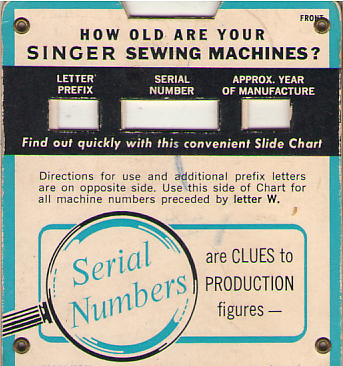Recent Additions to ISMACS
Wanzer Sewing Machine Company
The most successful of Canada’s sewing machine manufacturers was Richard Mott Wanzer. R. M. Wanzer was born in upstate New York in 1818. After a career in teaching, bookselling and, possibly, repairing sewing machines, he immigrated into Upper Canada about 1859 and settled in Hamilton, Ontario.
Continue Reading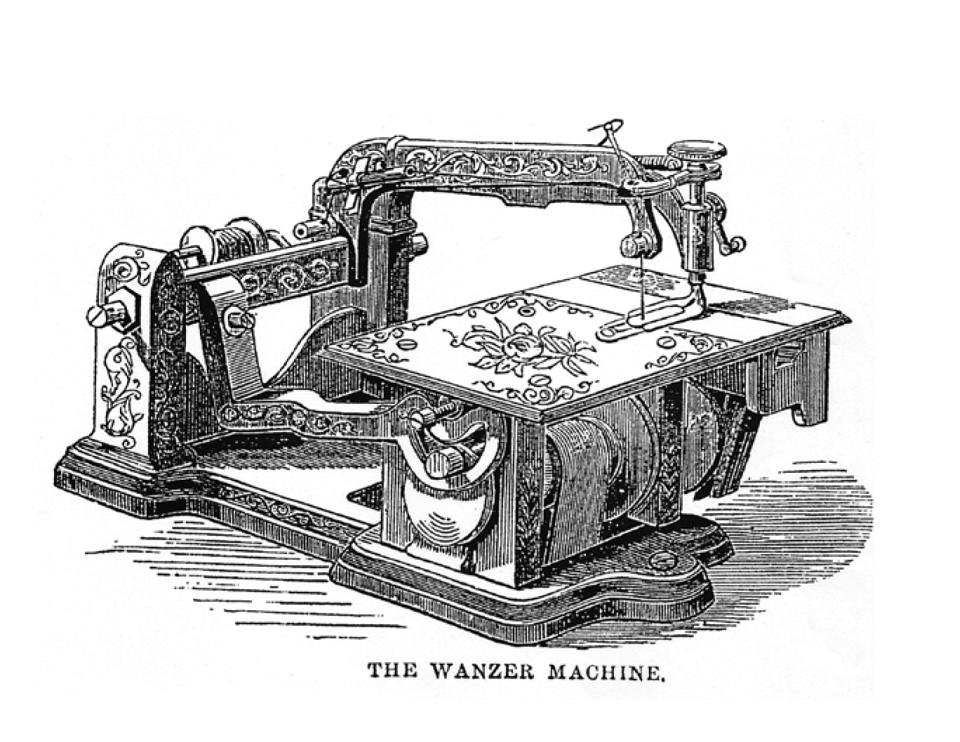
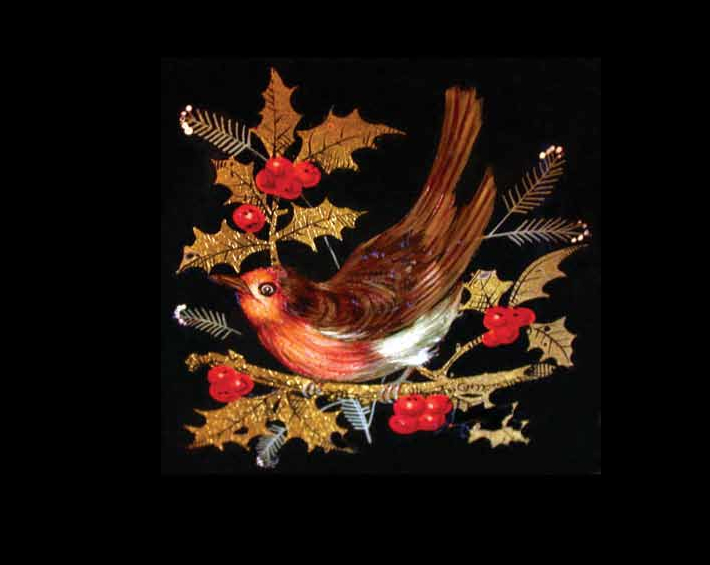
Season's Greetings
Richly decorated in gold leaf, the hand-painted robin and holly of his Bradbury Family S No.1 adds a festive air to what must have been a very special Christmas present for someone.
Continue ReadingThe Darning Machine
A generation and more ago, most people mended socks and hosiery when they wore through so that darning aids had a ready sale. In today’s world, most people buy the latest fashion and discard clothes long before they are worn out. When did you last darn tights or socks?
Continue Reading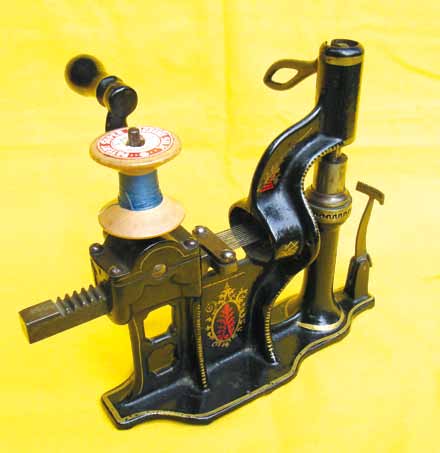
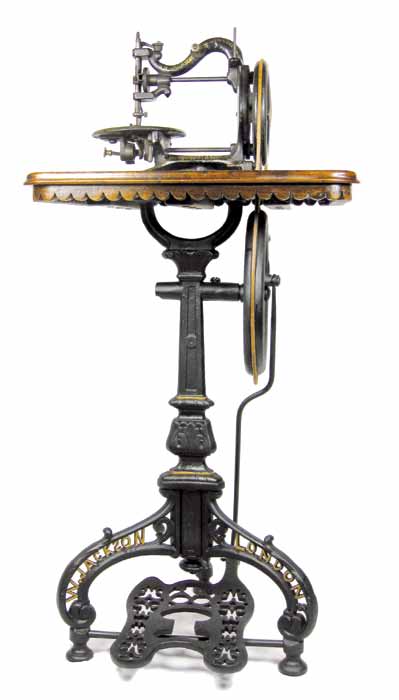
William Jackson's Sewing Machines
One small scale manufacturer who remained faithful to the rotary hook principle over many years was William Jackson. Jackson was a Yorkshire engineer who took out his first patent for a large industrial free arm lockstitch sewing machine in 1859 after he moved to London and was living in York Road, Lambeth. His machine used a rotary hook mechanism copied from Wheeler & Wilson.
Continue ReadingThe Shakespear Sewing Machine
Thomas Shakespear (no ‘e’ on the end of his name) and George Illston set up the Royal Sewing Machine Co. in 1868 in Birmingham. George Illston ran the factory and Thomas Shakespear looked after sales and marketing.T
Continue Reading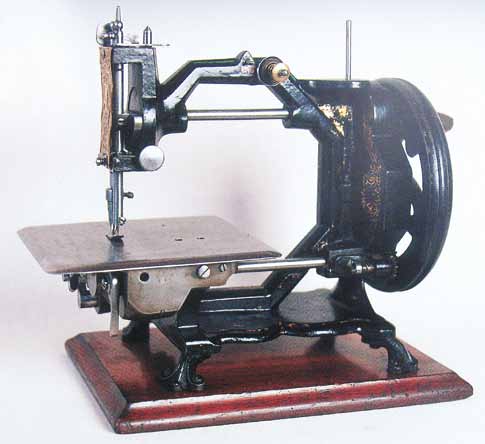
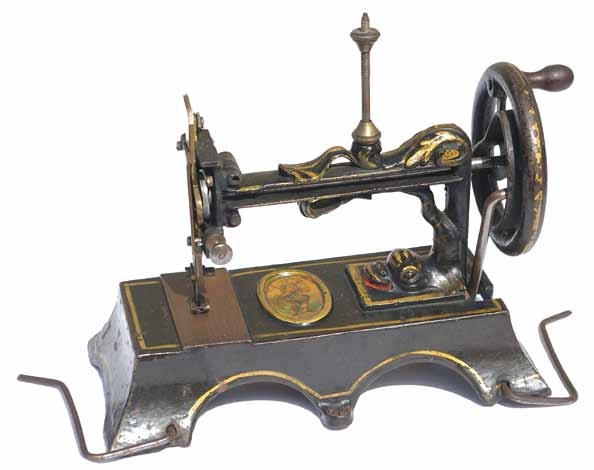
A Machine with a Story
Maybe wiped clean by now, but this machine once carried the fingerprints of James Gresham - inventor and maker of the Gresham machines in the 1860s and ‘70s.
Continue ReadingDavis Vertical Feed Attachments
The needle feed system used by the Davis Company in its V.F. domestic machines provided a reliable, positive action that ‘pushed’ the goods under the presser foot while the needle was in the material.
Continue Reading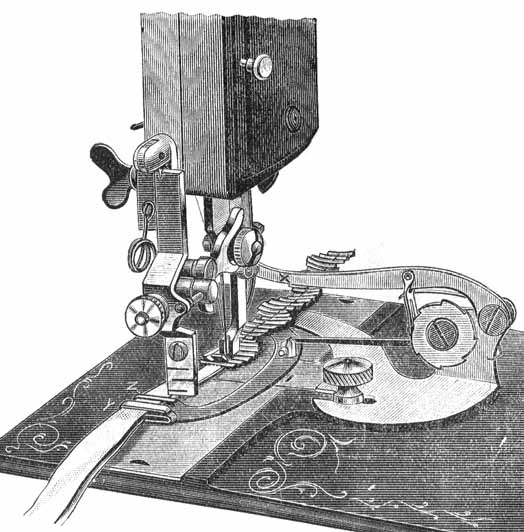
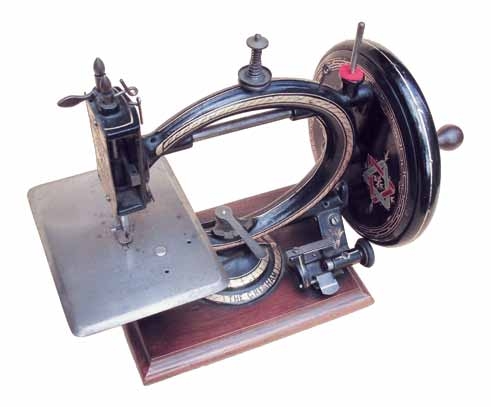
James Gresham
Charlie Hulme tracks down a sewing machine pioneer: the man, his life and times… and some of his achievements. James Gresham was born on 28 December 1836, at 13 Castle Gate, Newark, Nottinghamshire, to Richard and Elizabeth Gresham. He had an elder brother Robert and an elder sister Elizabeth.
Continue ReadingSharp Practice
One of the problems of maintaining our old machines is keeping them supplied with needles. Many sewing machine shops and repairers carry some old stock and random supplies of old needles regularly appear on specialist sites and the online auctions, but the classifications – which varied from manufacturer to manufacturer – now seem very confusing.
Continue Reading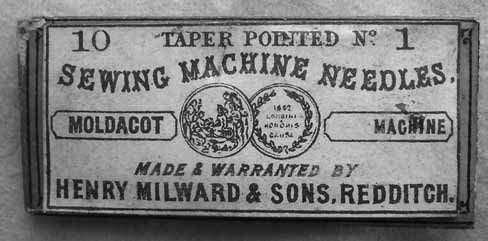
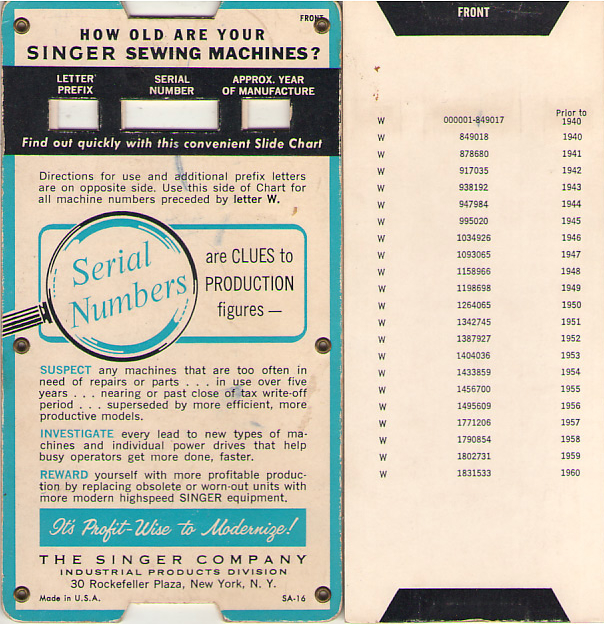
Serial Number Slide Chart
Singer's Serial Number Slide Chart allowing Family Shop owners to determine machine age and market new machines to their customers.
Continue ReadingCaring for a Pet Lion
The Kimball & Morton ‘Lion’ sewing machine of 1868 may not be the rarest of sewing machines but it is certainly the most bizarre British sewing machine. In America, several figural machines were patented in the early days but none was successful or as lifelike as this one. The ‘Lion’ was the only British entrant in that class.
Continue Reading
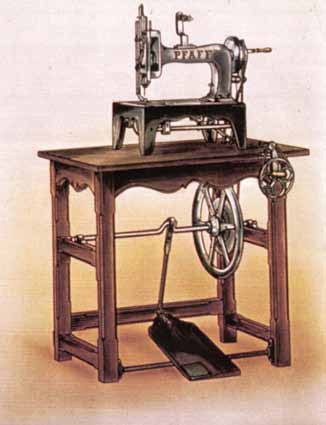
History of the Pfaff Sewing Machine Company
Eleven years after Isaac Singer began producing sewing machines in the USA, a young German instrument maker named Georg Michael Pfaff made his first sewing machine. Although not the earliest of German sewing machine makers - Pfaff was preceded by Clemens Müller of Dresden, in 1855 he proved to be a master craftsman, and a far–sighted businessman.
Continue ReadingEarly Singer Trade Cards
Trade cards became popular in the 1870s for local and national advertising. Locally, an agent could use them as a business card to leave with customers and, nationally, they helped to establish a brand.
Continue Reading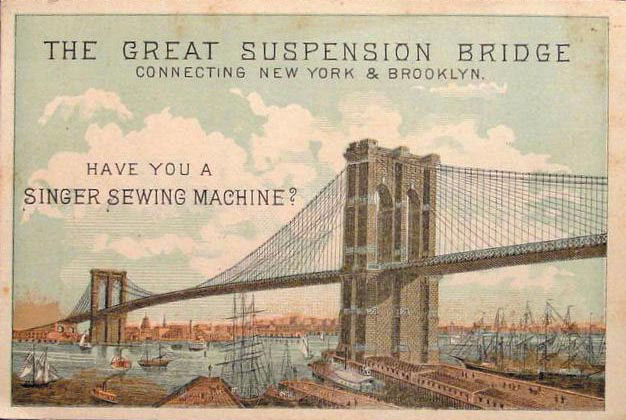
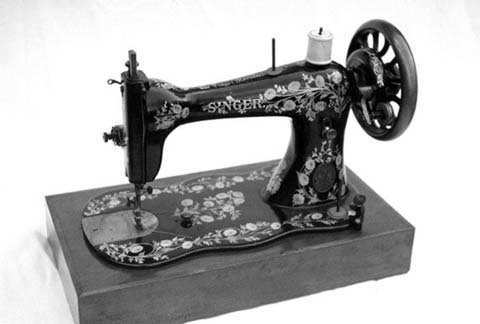
Singer's Class 15 'Improved Family' Sewing Machine
The Singer ‘class 12’ (12K in England) or ‘New Family' domestic machine of 1865 (Figure 1) was the foundation of Singer’s dominance of the sewing machine market. It was the most successful machine of the nineteenth century and, although Singer gave up manufacturing it in the 1890s, clones of it continued to be made up until the 1930s. However, it was not the perfect machine!
Continue ReadingThe True Likeness of a Princess?
In July 2006 a cast iron, figural toy sewing machine toy in excellent condition turned up at an auction . . .
Continue Reading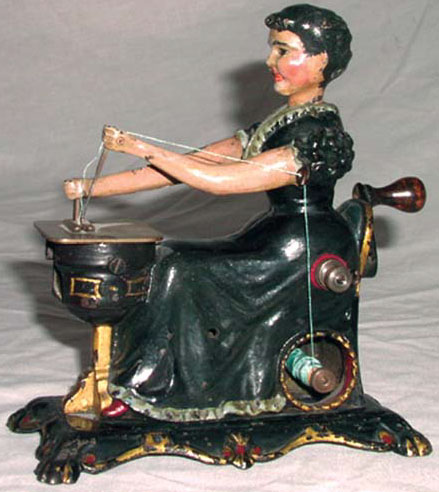

To Protect and Conserve
It is difficult to know where to begin when asked about Glasgow Museums’ sewing machine collection. It is so diverse, with so many jewels and there is so much exciting research still to be done. What a wonderful dilemma to have, however. I thought it best therefore to begin with my role in caring for the collection.
Continue ReadingHistory of the Moldacot Sewing Machine
Of all the mysteries surrounding early sewing machines and their makers, none is stranger than those involving that delightful miniature - the Moldacot.
Continue Reading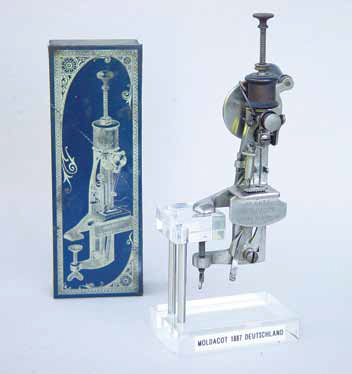
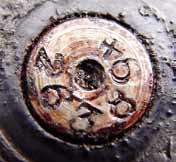
John Langdon explains why some Singer Sewing Machines have two serial numbers.
Singer stamped its early machines with two numbers. Officially, what we know as the serial number was called the ‘Register Number’ and, until the end of 1899, it kept a running total of all the machines made by both the USA and Scotland factories.
Continue Reading





